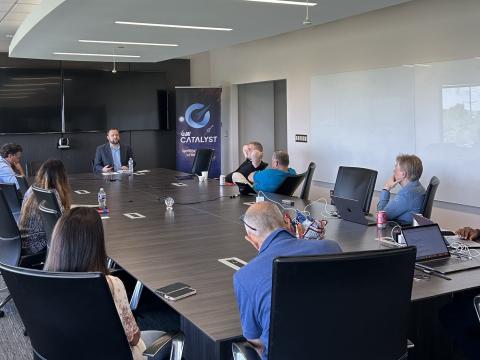Public and Private Sectors are Far Apart on LPTA
Lowest price technically acceptable procurement might not give government the best solutions, and it definitely causes consternation for industry, but it is here to stay at least for a while.
Lowest price technically acceptable (LPTA) procurement might not give government the best solutions, and it definitely causes consternation for industry, but it is here to stay at least for a while. A survey released this week reveals deep concerns about the LPTA business deals and why current fiscal demands will keep them around.
Market Connections Incorporated and Centurion Research Solutions showcased the difference in perception between the public and private sectors regarding LPTA and industry’s concerns it cannot deliver its best work under the contracts. “The government really needs to stay cognizant that in the LPTA world, they could be sacrificing innovation and value,” Lisa Dezzutti, president and chief executive officer of Market Connections, says. Public officials should not expect the same level of quality on deliverables using the lowest-price selection method. The situation frustrates contractors, most of whom want to provide their best work to the clients they serve. Dezzutti says industry must understand that despite the problems, LPTA will remain a common way of business, so they need to make the necessary strategic adjustments to compete.
Only 12 percent of contractors said they were very satisfied with the quality of deliverables under this type of procurement. Twenty-five percent of government said the same. The numbers increase to 39 and 34 percent, respectively, for the “somewhat satisfied” response. With 59 percent of government officials expressing some level of satisfaction, Dezzutti believes it will take a long time before the pendulum swings away from LPTA. Fifty-nine percent of contractors and 42 percent of government workers expect LPTA procurement to increase over the next three years. Sixty-four percent of government respondents are likely to issue an LPTA request for proposal (RFP) in the future, and 82 percent of contractors are likely to respond.
The main reason to respond to LPTA RFPs, given by 61 percent of private-sector participants, is the decreasing amount of money and RFPs on which to bid. But 79 percent said the reason not to bid on an LPTA is that it offers no opportunity for a value-added solution. Fifty-six percent said they cannot be competitive on price. Of government respondents, 46 percent said the reason to issue an LPTA is because of limited budget. No other reason to issue an LPTA was selected by even 20 percent of the participants.
Every question and issue surrounding LPTA comes down to funding, even to the point that many equate LPTA and Best Value, though the two are not supposed to be the same. One private-sector respondent commented, “Any time an RFP tells you that price is not important or is less important than anything else, it’s a bold-faced lie. Everyone knows that.” Dezzutti says more participants took the time to write-in opinions than in surveys on other topics, sometimes contributing paragraphs. Their input demonstrates the effects of LPTA on the government contracting community.
She explains the results generally did not surprise her. “For the most part, it confirmed what a lot of us were already feeling and seeing,” she explains. However, she did expect government to be more familiar with LPTA than they are. While 77 percent of contractors said they are very familiar with LPTA, only 32 percent of government officials said the same. When looking only at military personnel, that number goes up to 70 percent. Further showcasing the gap between government and industry on the issue were results on the questions about drawbacks of LPTA for the federal government. Of the eight answer choices, six came back with statistically significant different results. The top two were “contracts may be awarded to less qualified companies” and “sacrifices long-term value for short-term cost savings, and” they had variances of 12 percent and 22 percent, respectively.
Only 34 percent of contractors said they would compete for an LPTA RFP because they believe they have a good handle on the competitive landscape. Companies who want to fare well will have to learn more about the environment. “Your competitors will be armed with this information,” Dezzutti says. “You better be sure that you have it too.” Businesses can compensate for some LPTA challenges by changing their work force and cost centers, creating new partnerships with other contractors and looking into adjacent markets such as those in foreign countries, at state and local levels or in industries such as oil.
The full report on the survey will be released in November. It will contain further analysis and breakdowns of data as well as more of the comments respondents took the time to write. An overview is available online now.



Comments